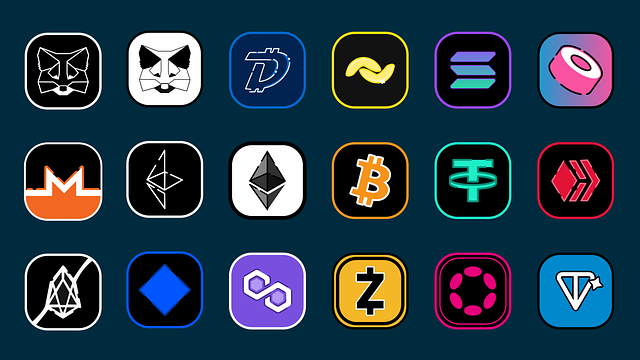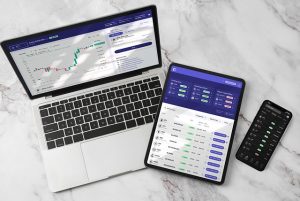Solana’s Future: Trends Shaping the Blockchain’s Destiny
Solana, launched in 2019, has emerged as a powerful blockchain alternative to Ethereum, boasting fas…….

Solana, launched in 2019, has emerged as a powerful blockchain alternative to Ethereum, boasting fast transactions, low fees, and robust smart contracts. Its thriving ecosystem of decentralized applications (dApps) and industry adoption across finance, gaming, and NFTs highlight its current success. Solana's impressive on-chain metrics, unique architecture leveraging parallel processing and sharding, and notable partnerships position it as a game-changer in the blockchain space. With continuous innovation, Solana is redefining scalability, performance, and interaction with decentralized technologies, solidifying its status as a leading blockchain technology. Its potential in DeFi and NFTs, coupled with enterprise-level support, suggests a bright future shaping the web3 ecosystem.
“Solana, a blockchain platform known for its high-performance capabilities, is poised to redefine the future of decentralized applications. This article explores the current state of Solana and its path forward, focusing on key trends that are shaping its evolution. From scalability enhancements to groundbreaking uses in Decentralized Finance (DeFi) and Non-Fungible Tokens (NFTs), we delve into the factors driving enterprise adoption and regulatory considerations. By examining these dynamics, we gain insights into Solana’s potential to become a dominant force in the blockchain landscape.”
- The Current State of Solana: Where Are We Now?
- Scalability and Performance: Meeting Demand
- Decentralized Finance (DeFi) on Solana: A Growing Ecosystem
- Non-Fungible Tokens (NFTs): Solana's Creative Revolution
- Enterprise Adoption: Businesses Embracing the Solana Network
- Regulatory Landscape: Navigating the Legalities of Solana
- The Road Ahead: Predicted Trends and Future Possibilities
The Current State of Solana: Where Are We Now?

Solana, a blockchain platform designed for high-performance and scalability, has experienced significant growth since its launch in 2019. Today, it stands as one of the leading alternatives to Ethereum, attracting developers and investors alike with its fast transactions, low fees, and robust smart contract capabilities. The network’s current state is marked by a thriving ecosystem of decentralized applications (dApps) and growing adoption across various industries, from finance to gaming.
Solana’s on-chain metrics paint an encouraging picture: rapid block production times, high transaction throughput, and a dedicated developer community constantly pushing the platform’s boundaries. This momentum has led to notable partnerships with major tech companies and institutions, further solidifying Solana’s position as a game-changer in the blockchain space. With its unique architecture and continuous innovation, Solana is poised to redefine how we interact with decentralized technologies.
Scalability and Performance: Meeting Demand

Solana, a blockchain platform known for its innovative architecture, is poised to make significant strides in scalability and performance—areas crucial for its future growth. As demand for decentralized applications (dApps) continues to surge, Solana’s ability to process transactions at remarkable speeds becomes increasingly vital. The network’s unique design, employing parallel processing and sharding, allows it to handle a vast number of operations per second, setting it apart from many other blockchain networks.
This focus on scalability is expected to attract developers building high-performance dApps, especially in sectors like gaming, finance, and Web3. By efficiently meeting the demand for faster transaction times, Solana has the potential to become a go-to choice for projects seeking optimal speed and cost-effectiveness, solidifying its position as a leading blockchain technology.
Decentralized Finance (DeFi) on Solana: A Growing Ecosystem

Decentralized Finance (DeFi) is rapidly transforming the financial landscape, and Solana is at the forefront of this revolution. The blockchain’s high transaction speed and low fees make it an attractive platform for DeFi applications. As a result, we’re seeing an explosion of innovative projects springing up on Solana, from decentralized exchanges to lending protocols and yield farming opportunities. This growing ecosystem is not only enhancing financial accessibility but also fostering competition, driving down costs, and expanding the range of services available to users.
With its robust infrastructure and dedicated developer community, Solana is poised to play a significant role in shaping the future of DeFi. As we move forward, expect to see even more sophisticated financial tools and protocols emerge, further blurring the lines between traditional finance and decentralized alternatives.
Non-Fungible Tokens (NFTs): Solana's Creative Revolution

Solana is poised to make a significant impact on the world of Non-Fungible Tokens (NFTs), revolutionizing creativity and digital ownership. Its high-speed, low-cost transactions are ideal for NFT marketplaces, enabling artists to mint, buy, and sell unique digital assets with ease. The platform’s scalability and efficiency mean that creators can reach a global audience quickly, fostering a vibrant ecosystem of digital art and collectibles.
As NFTs continue to gain mainstream attention, Solana’s role as an enabler of this creative revolution is becoming increasingly evident. With its growing developer community and robust infrastructure, Solana is set to become a leading destination for NFT projects, driving innovation and shaping the future of digital ownership and interaction.
Enterprise Adoption: Businesses Embracing the Solana Network

The Solana network has been making waves in the blockchain space, attracting significant attention from businesses across various sectors. Its high-performance capabilities, offering fast transactions and low fees, present a compelling case for enterprise adoption. Many companies are now exploring how Solana can enhance their operations, particularly in areas like decentralized finance (DeFi), non-fungible tokens (NFTs), and scalable data management.
As more businesses embrace the Solana network, we can expect to see increased innovation and a broadening of use cases. This trend is driven by the platform’s ability to facilitate complex applications while maintaining efficiency and security. With enterprise-level support, Solana is poised to become a key player in shaping the future of decentralized technologies and transforming traditional business models.
Regulatory Landscape: Navigating the Legalities of Solana

The regulatory landscape surrounding Solana, like that of many other cryptocurrencies, is an evolving and complex territory. As the popularity of Solana grows, regulators worldwide are actively working to establish clear guidelines for its use. This navigation of legalities is pivotal as it influences the speed at which the Solana ecosystem can expand and mature. The decentralized nature of blockchain technology often presents unique challenges when it comes to compliance, especially regarding anti-money laundering (AML) and know-your-customer (KYC) regulations.
The future of Solana’s regulatory environment hinges on striking a balance between fostering innovation and ensuring consumer protection. As more jurisdictions adopt and recognize digital assets, we can expect to see standardized rules for Solana’s integration into various industries. This could open doors for widespread institutional adoption, enabling larger-scale transactions and potentially reshaping the financial sector as we know it.
The Road Ahead: Predicted Trends and Future Possibilities

The future of Solana holds immense potential as it continues to evolve and disrupt the blockchain landscape. With its rapid growth in popularity, Solana is poised to become a leading force in the decentralized applications (dApps) space, offering unparalleled speed and scalability. As developers embrace the platform, we can expect an explosion of innovative projects, from decentralized finance (DeFi) protocols to non-fungible token (NFT) marketplaces, all running on Solana’s efficient infrastructure.
Looking ahead, Solana’s community-driven nature and active development will likely lead to groundbreaking enhancements. The integration of new features like improved privacy and enhanced security will make it an even more attractive option for businesses and users alike. With a focus on interoperability, Solana may also facilitate seamless interactions between different blockchains, opening up exciting possibilities for cross-chain applications and a more interconnected web3 ecosystem.
As we peer into the future, the prospects for Solana look promising. With its proven scalability, performance, and expanding ecosystem across DeFi, NFTs, and enterprise adoption, Solana is poised to become a dominant force in the blockchain space. Navigating the regulatory landscape will be crucial, but the trends indicate a bright future for this versatile network. Stay tuned as we continue to monitor and report on the latest developments in the world of Solana.






